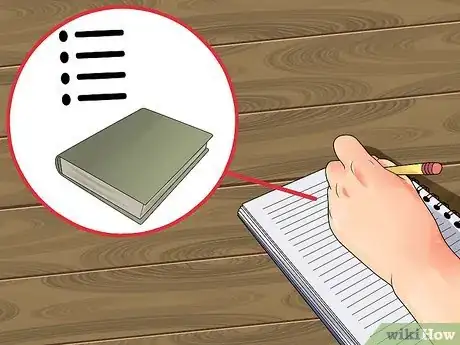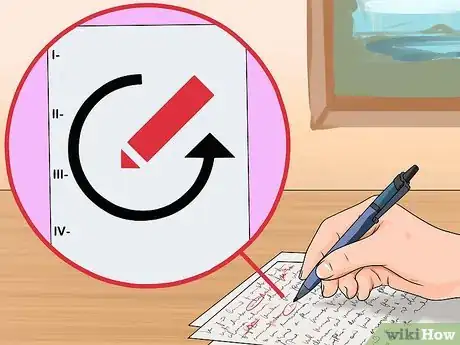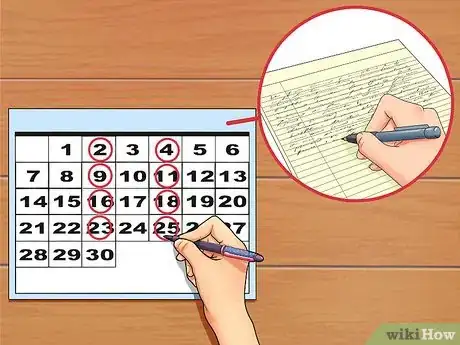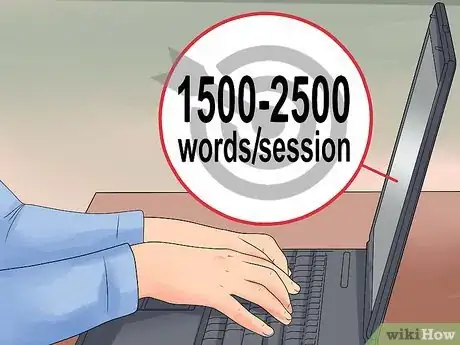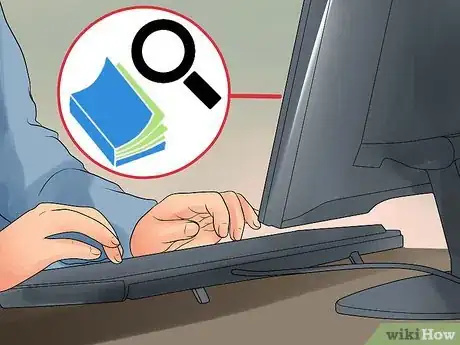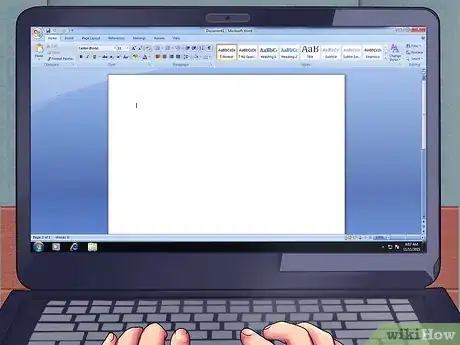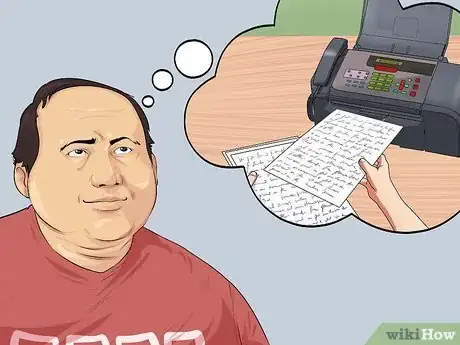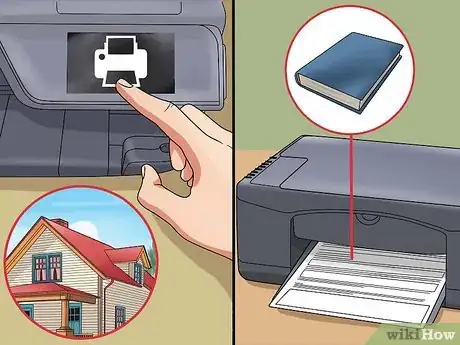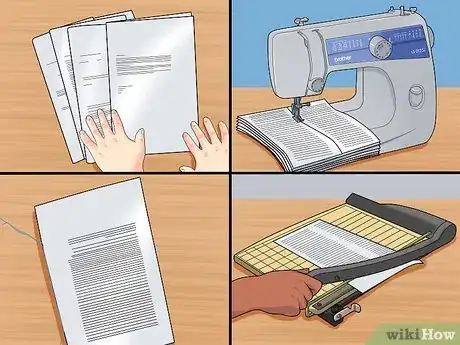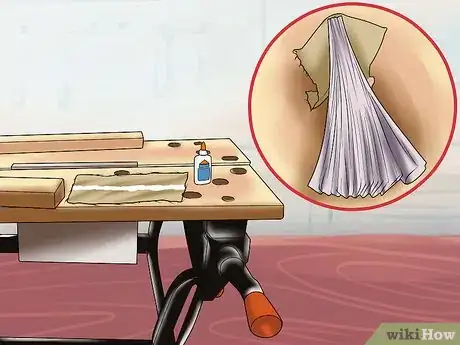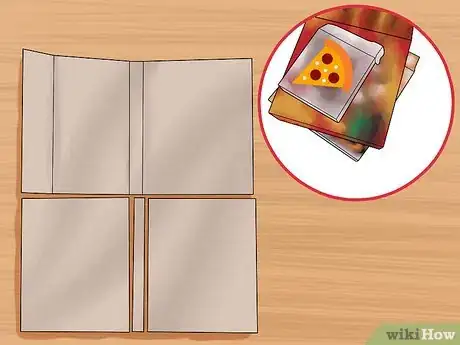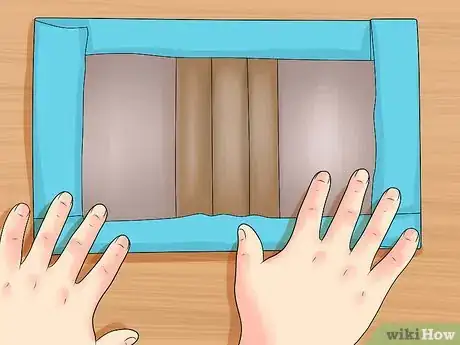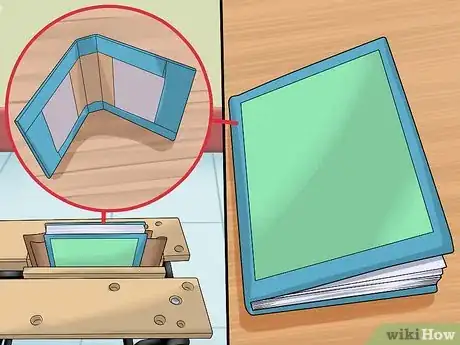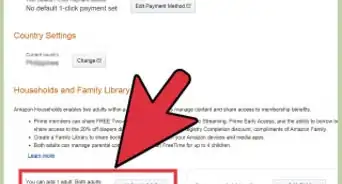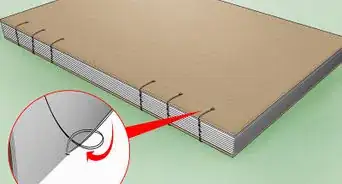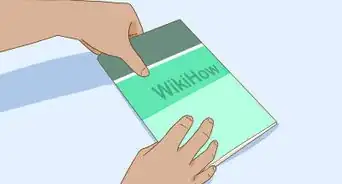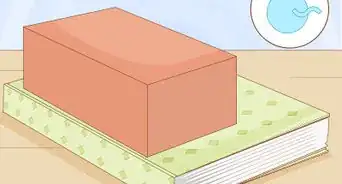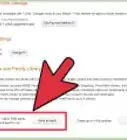This article was co-authored by Zachary Green. Zachary Green is an Entrepreneurship Coach, Author, and U.S. Marine Corp Veteran. With over 10 years of experience as an entrepreneur, he specializes in helping people transform their businesses, relationships, and lives. Zachary’s book, Warrior Entrepreneur, focuses on how warrior traits can help entrepreneurs, leaders, and others battle through adversity and accomplish their missions. Zachary was featured in Entrepreneur Magazine, on the front page of Yahoo.com, MSN.com, and in USA Today, along with numerous other local and national media outlets, and was named Entrepreneur of the Year by Governor John Kasich. Zachary was also selected by the Obama White House as one of 10 entrepreneurs to represent the United States at the Global Entrepreneur Summit. He was also featured in the US Playing Cards Frontline Leaders playing card series as one of 52 veteran entrepreneurs. Zachary earned a BA in Marketing and Sports Management from Bowling Green State University in Ohio. He won the Ohio Chamber of Commerce Entrepreneur of the Year in 2013, the SBA Ohio Small Business Exporter of the Year in 2016, a Spartan Distinguished Alumni Award in 2017, and a President’s E Award in 2019.
There are 9 references cited in this article, which can be found at the bottom of the page.
This article has been viewed 61,427 times.
Planning, writing, and assembling a book is an exciting and challenging process! There are several ways to achieve or complete the act of writing a book. Take control of the entire creative process—from outlining to binding—and push the boundaries of your artistic limits.
Things You Should Know
- Choose a topic for your book that excites you so you're motivated to work on it.
- Set a word count goal to keep yourself accountable. For example, aim to write 1500 to 2500 words per day.
- When your book is finished, print and bind it and create your own cover.
Steps
Brainstorming
-
1Select a topic. Grab a pad of paper and a pencil, a computer will work too, and generate a list of potential topics. Write or type down every idea that comes to mind. Remember, the most mundane idea could turn into an amazing story! Your topics could be as general as “a children’s book about a zebra” or as specific as “a historical-fiction novel about George and Martha Washington’s courtship.” At this stage in the process, every idea is a good idea! If you are struggling to come up with ideas, draw inspiration from your own life. What are your interests? Do you have a secret passion for car racing or anime? Draw ideas from you childhood memories. Dramatize your first trip to the zoo or your first swimming lesson. After creating a list of potential subjects, select a topic from the list that grabs your attention. You will dedicate the next few weeks, months, or years to writing about the topic, so pick a topic that excites you![1]
- To determine if your idea has legs, write an elevator pitch, a short, to-the-point speech about your topic. If it sounds innovative, thrilling, and or interesting as an elevator pitch, it should make an excellent story![2]
- If you are struggling to come up with a topic or narrow the list down to one topic, step away. Take your mind off of the book by exercising, shopping, or completing household chores. When you feel ready to tackle the task, return to the list refreshed, refocused, and re-energized!
-
2Identify your audience. Identifying your audience may give your book direction and focus. You would not write the same story for children, young adults, and adults. The plot of a children’s book would be far less complex than the plot of an adult novella. Once you have selected your ideal age group, determine which faction of the age group is your target audience. Is your reader male or female? Does your ideal reader like mysteries, thrillers, romances, or sci-fi? Once you have identified your audience, create fictional reader profiles. Name your fictional readers and give each one a back story. Note their age, sex, education level, their likes, dislikes, and hobbies. Keep their profiles handy throughout the brainstorming and writing process. You will find yourself asking, “would Jason like this character?” or “will Stephanie laugh at this line?”[3]Advertisement
-
3Develop your characters. Your characters will bring your story to life! Create interesting characters capable of driving the plot forward. Create a stellar and complex protagonist and a brilliant antagonist. Develop your supporting characters too! Create a detailed profile for each character you create. Find or draw a picture of the character. Don’t simply state surface level details. It is not enough to state that a character is tall, blonde, and an attorney. That information provides limited insight into the character’s personality! Instead, provide information on their family history, the academic career, their job, their worst fear, their favorite foods. Keep these profiles out while you write. Spending time on the minor details—the little things, the imperfections—will make your characters more interesting and relatable![4]
-
4Outline your book. Writing a book of any length requires planning! Outlines will help you remain focused throughout the writing process and they will prevent you from straying from your plot. Get creative and use your strengths. If you are a visual person, develop a storyboard. If you are a more logical person, develop an outline organized by headings and subheadings, points and subpoints. When outlining, keep in mind that every plot has 5 sections: an inciting incident, complications, a climax, an anti-climax, and a conclusion. Construct your story arc around these 5 sections. Develop an incident that launches your book. Create complications that test your protagonist. Craft a climax that brings the conflict between the protagonist and the antagonist to an exciting peak. Tie up loose ends throughout the anti-climax. Bring your book to a close in the conclusion.
- You could also make a flowchart, use bullet points, write on note cards, create a concept map.
- Sometimes it is helpful to create multiple forms of an outline. Each type of outline forces you to think through your story in a slightly different way. Storyboarding requires you to visualize the plot and your characters; flowcharts force you to consider how one subplot flows into the next subplot.
- Don’t aim for perfection. Outlines are meant to be rough sketches of your story!
-
5Research the market. Your topic will never be completely novel. To avoid completely reproducing a published work, research the market. Find 3 to 5 books that are similar to your topic and read them. Analyze how the plots differ from your plot. Determine if and how your characters are unique and innovative. Identify what makes your book special in comparison to all the other thrillers or romances on the shelves.[5]
- If you are struggling to identify your book’s individuality, don’t panic. Revision is a natural part of the writing process! Return to your outline and be willing to make changes to your plot and characters. Your work will be stronger as a result of these alterations!
- Don’t get disappointed when you discover a book with a similar plot. There is nothing new under the sun!
-
6Revise your outline. Revisions may be stressful and frustrating, but they are always necessary! Review your outline with a critical eye and a red pen. Does your story flow? Is the climax exciting? Does the plot reach a logical conclusion? Is the conclusion too obvious? Are there any tangential sections or subplots that should be cut? Are your characters developed enough? Do you need to develop more characters? Is the setting appropriate? Will my audience enjoy the finished product? After critiquing your outline, make any necessary changes.[6]
- If you feel too close to your work, ask a friend to look it over for you. They may be able to identify any plot holes or tangential sections.
Writing and Revising
-
1Schedule your writing time. While it is ideal to write every day, it is not practical for everyone. Consider your commitments and set a realistic goal for yourself. Determine how frequently you will write. Decide if you will have time to write every day, twice a week, or just once in awhile. [7]
- Some weeks or months you will have more time. Be flexible. If you see an opportunity to write for an hour, grab it!
-
2Set a word count goal. Set a realistic word count goal per writing session. This goal is meant to keep you accountable, focused, and progressing towards the completion of your work. If you are a slower writer, your word count goal may be 1000 words per session. If you only have one hour to devote per session and you are a speedier writer, set a word count goal of 1500 to 2500 words per session. If you are setting aside 4 to 8 hours a day to write, aim for 5,000 to 10,000 words per session.[8]
- Don’t stress over failing to reach your goal in the allotted time. Instead, remain positive and try to meet the goal during your next session.
-
3Write. Find a quiet place, free of distractions, and write! Don’t stress about comma placement or noun-verb-agreement. Just get words down on the page and edit later. Have your outline, audience profiles, and character profiles out on your workspace in case you need to look up a detail here or there.
- If you are feeling stuck or having a hard time getting started, join a writing workshop. Talk over your problems with other experienced writers; get feedback on your work.[9]
- Use one word file instead of multiple word files. Keeping your work together in one place will generate a sense of continuity. Plus, if you make a change to your plot that impacts an earlier chapter, all you have to do is scroll up to make the alteration.[10]
-
4Revise, edit, rewrite, repeat. Open a new word document and copy-paste your novel into it. This will allow you to preserve each version of your work. Read through the document at a pace you are comfortable with. Some writers like to revise in one sitting, while others revise their work over the course of a day or week. Search for typos and grammatical errors. Pay attention to the flow of the story—are there any plot holes, is there a scene that needs to be removed, and is your climax at an appropriate point in the story? Read your dialogue carefully—does it sound realistic, does each character have a consistent voice, and is it easy to follow? After revising your book once, set it aside for a day before making your next set of revisions. When you feel confident with the story, declare it “finished.”
- A work is never completely finished, but at some point you must stop striving to perfect it.
- If you struggle to edit your work with a critical eye, ask a colleague, friend, or family member to serve as your editor.
Designing the Book
-
1Research. Bookmaking comes with conventions that are hundreds of years old. Your readers will expect that your book follows these conventions. Before designing your book, educate yourself on the art of bookmaking! You will learn that every book has a cover page and a copyright page. The odd pages should always be on the right and even pages should be on the left. Your text should be justified instead of left aligned. Page through 15 to 20 books that a produced with a similar audience in mind. Study the books’ formats. Make note of the elements you like and the ones you dislike.[11]
-
2Decide who will create the book’s iconic look. If you feel unsure of your design skills, hire a professional book designer. If you are not particularly tech-savvy, consider using an online service that offers you a guided design experience and will even print the book for you! If you wish to have control over the entire process of designing the book, create the book’s look yourself. When creating your own book, you assume responsibility for every element. Remain organized and detail oriented throughout the process.
-
3Design the book. When creating your own book, consider using Microsoft Word or InDesign. Both platforms allow you to create the book with a template. Rely on your research to guide you through the decision making process. Will your book be hardcover or paperback? What fonts will you use? Where will the page numbers be located? How will you format your chapters? How will you incorporate illustrations? These questions may appear menial, but your attention to detail will pay off! Once you have made your design decisions, start creating and styling the book. Don’t be afraid to revise your design during the process.[12]
Printing the Book
-
1Decide how you will print the book. There are several methods of printing a book. You could choose to print your book at home. You may decide to send the book to a print shop. You could have an online service print and bind your book. A professional printing press could mass-produce your book. Select the option that is right for your budget and the scale of the print job.
-
2Print your book at home. Save your book as a PDF. Under the file menu, select print. Since your book is shorter, select “All” under “Pages to Print.” Under the section labeled “Page Sizing & Handling,” select Booklet. A “Booklet Subset” menu will appear on the screen. If your printer can print on both sides of the paper, select “Both Sides.” If your printer can not print on both side, choose “Front Side Only/Back Side Only.” You will have to print the front side, reload the printer, and then print the backside. Click “Print.”[13]
-
3Print your novel at home. Save your book as a PDF. Under the file menu, select print. Select “Page Range” under “Pages to Print.” You will print your work in smaller sections of either 16, 24, or 32 pages. Under the section labeled “Page Sizing & Handling,” select Booklet. A “Booklet Subset” menu will appear on the screen. If your printer can print on both sides of the paper, select “Both Sides.” If your printer can not print on both side, choose “Front Side Only/Back Side Only.” You will have to print the front side, reload the printer, and then print the backside. Click “Print.” Repeat until all remaining sections are printed. Keep pages separated by section.[14]
- Always start printing at page 2. Page 1 is your cover page and must be printed separately.
Binding the Book
-
1Decide how you will bind the book. There are several ways to bind a book. If you send your book off to a professional printing press or an online printing company, the cost of binding the book is typically included. If you have your book printed at a print shop, you may request that the company also bind your book. You may also choose to bind your book at home.[15]
-
2Fold, sew, and trim the book at home. Individually fold each page down the center. If you printed more than one section of pages, keep the pages separated by section. Restack the papers in the correct order. Using a sewing machine, sew a straight line down the center fold of each section of papers. Begin sewing 1 to 2 inches away from the paper’s top edge; finish sewing 1 to 2 inches away from the paper’s bottom edge. Don’t trim the loose thread, but leave 3 to 4 inches of loose thread on each end. With a needle, Pull the loose threads to the outside of the book. Repeat this process on each section of papers. Once all batches are sewn, pull all of the loose thread from the inside of the book to the outside of the book with a needle. Trim off any excess paper with a paper cutter.[16]
-
3Bind the book. If you have multiple sections, place them in the correct order. Align all of the edges. Using a Workmate, secure the book tightly between two pieces of wood. The sewn edges of the book, the side with the loose strings, should be facing up. Measure and cut a piece of scrap fabric. The fabric must be 2 inches longer than the book’s spine. When placed on the spine, there should be 2 to 4 inches of fabric on each side, or wing of the book. Use a brush to apply a coat of binding glue to the sewn edges of the book and adhere the piece of fabric to the spine. Allow the glue to dry before removing the bound book.[17]
-
4Create a cover. Measure the length of your book and the width of the front cover, spine, and back cover of your book. Trace out 4 pieces from cardboard. Piece 1 should be the length and width of the front cover. Piece two should be the length and width of the spine. Piece should be the length and width of the back cover. Piece 4 is the length the book and the combined width of front cover, spine, and back cover. Cut out the cardboard pieces. Use a glue stick to adhere pieces 1, 2, 3 to piece 4. Fold piece 4 along each edge of the spine. Allow it to dry.[18]
- Pizza boxes work great!
-
5Cover the cardboard in fabric. Use any type of fabric, a spare sheet or set of curtains would work well! The fabric should be 1 to 2 inches longer or wider than the book on each side. Fold the surplus fabric over the edge of the book and adhere it to the cardboard. Allow it to dry before attaching the printed front and back covers to the fabric.[19]
-
6Assemble the book. When the cover is dry, insert the bound book. Apply a coat of glue to the fabric attached to the spine of the bound book. Make sure to coat the flaps of fabric with glue too. Adhere the fabric attached to the bound book to the inside spine of the cardboard cover. Press the bound book and cover together using the Workman. The spine should be facing down. Wait for the glue to dry before showing off your finished product![20]
Expert Q&A
-
QuestionHow do I get my self-published book into bookstores?
 Zachary GreenZachary Green is an Entrepreneurship Coach, Author, and U.S. Marine Corp Veteran. With over 10 years of experience as an entrepreneur, he specializes in helping people transform their businesses, relationships, and lives. Zachary’s book, Warrior Entrepreneur, focuses on how warrior traits can help entrepreneurs, leaders, and others battle through adversity and accomplish their missions. Zachary was featured in Entrepreneur Magazine, on the front page of Yahoo.com, MSN.com, and in USA Today, along with numerous other local and national media outlets, and was named Entrepreneur of the Year by Governor John Kasich. Zachary was also selected by the Obama White House as one of 10 entrepreneurs to represent the United States at the Global Entrepreneur Summit. He was also featured in the US Playing Cards Frontline Leaders playing card series as one of 52 veteran entrepreneurs. Zachary earned a BA in Marketing and Sports Management from Bowling Green State University in Ohio. He won the Ohio Chamber of Commerce Entrepreneur of the Year in 2013, the SBA Ohio Small Business Exporter of the Year in 2016, a Spartan Distinguished Alumni Award in 2017, and a President’s E Award in 2019.
Zachary GreenZachary Green is an Entrepreneurship Coach, Author, and U.S. Marine Corp Veteran. With over 10 years of experience as an entrepreneur, he specializes in helping people transform their businesses, relationships, and lives. Zachary’s book, Warrior Entrepreneur, focuses on how warrior traits can help entrepreneurs, leaders, and others battle through adversity and accomplish their missions. Zachary was featured in Entrepreneur Magazine, on the front page of Yahoo.com, MSN.com, and in USA Today, along with numerous other local and national media outlets, and was named Entrepreneur of the Year by Governor John Kasich. Zachary was also selected by the Obama White House as one of 10 entrepreneurs to represent the United States at the Global Entrepreneur Summit. He was also featured in the US Playing Cards Frontline Leaders playing card series as one of 52 veteran entrepreneurs. Zachary earned a BA in Marketing and Sports Management from Bowling Green State University in Ohio. He won the Ohio Chamber of Commerce Entrepreneur of the Year in 2013, the SBA Ohio Small Business Exporter of the Year in 2016, a Spartan Distinguished Alumni Award in 2017, and a President’s E Award in 2019.
Entrepreneurship Coach You've got to build a community! That starts with building up your social media platforms, engaging with your audience, and participating in events like book signings. A lot of local bookstores will be open and they'll typically be on the hook to buy 10 or 20 books. Make sure you've got good public relations and do press releases as you prepare for these events—from there, get that manager to share that info with another manager in a nearby store. Continue to do that, and then eventually talk to them about stocking your book in multiple locations.
You've got to build a community! That starts with building up your social media platforms, engaging with your audience, and participating in events like book signings. A lot of local bookstores will be open and they'll typically be on the hook to buy 10 or 20 books. Make sure you've got good public relations and do press releases as you prepare for these events—from there, get that manager to share that info with another manager in a nearby store. Continue to do that, and then eventually talk to them about stocking your book in multiple locations. -
QuestionCan I get a book published at age 10?
 Ludum VictoremCommunity AnswerYou can get a book published at any age.
Ludum VictoremCommunity AnswerYou can get a book published at any age. -
QuestionCould I make a pop-up cover?
 Community AnswerYes. Be as creative as you would like to be. If your book has creative ideas, it could be more appealing to your audience.
Community AnswerYes. Be as creative as you would like to be. If your book has creative ideas, it could be more appealing to your audience.
Expert Interview
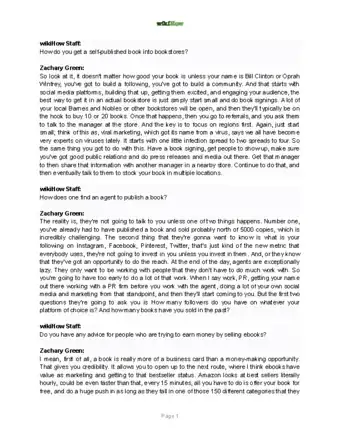
Thanks for reading our article! If you'd like to learn more about publishing a book, check out our in-depth interview with Zachary Green.
References
- ↑ http://www.writersworkshop.co.uk/how-to-write-a-book.html
- ↑ http://www.writersworkshop.co.uk/how-to-write-a-book.html
- ↑ http://www.forbes.com/sites/brettarends/2014/06/02/five-essential-tips-for-anyone-trying-to-write-a-book/
- ↑ http://www.writersworkshop.co.uk/how-to-write-a-book.html
- ↑ http://mackcollier.com/so-you-want-to-write-a-book-heres-10-things-you-need-to-know-to-get-published/
- ↑ http://blog.janicehardy.com/2010/01/re-write-wednesday-clarifying-thoughts.html
- ↑ http://fmwriters.com/Visionback/issue7/adwrigoals.htm
- ↑ http://fmwriters.com/Visionback/issue7/adwrigoals.htm
- ↑ http://www.forbes.com/sites/brettarends/2014/06/02/five-essential-tips-for-anyone-trying-to-write-a-book/
- ↑ http://www.writersdigest.com/editor-blogs/there-are-no-rules/7-tips-for-revising-a-novel
- ↑ https://janefriedman.com/book-design-joel-friedlander-2/
- ↑ https://janefriedman.com/book-design-joel-friedlander-2/
- ↑ https://helpx.adobe.com/acrobat/kb/print-booklets-acrobat-reader.html
- ↑ https://helpx.adobe.com/acrobat/kb/print-booklets-acrobat-reader.html
- ↑ http://tuxgraphics.org/npa/book-binding/
- ↑ http://tuxgraphics.org/npa/book-binding/
- ↑ http://tuxgraphics.org/npa/book-binding/
- ↑ http://tuxgraphics.org/npa/book-binding/
- ↑ http://tuxgraphics.org/npa/book-binding/
- ↑ http://tuxgraphics.org/npa/book-binding/
About This Article
To make a book, choose a topic and genre, then create detailed profiles for your characters. Organize a written outline to help you structure the plot, or create storyboards to help you arrange the narrative. Next, set a realistic writing schedule for yourself, then get busy writing the book's content! Focus on getting the words down on the page—you can edit later. Revise, edit, and rewrite the content until you're happy with the story. Then, you can print out the pages and even create your own cover and binding for the book. If you want to learn how to design the layout of your book, keep reading the article!



